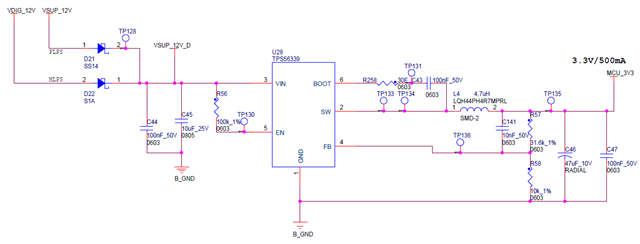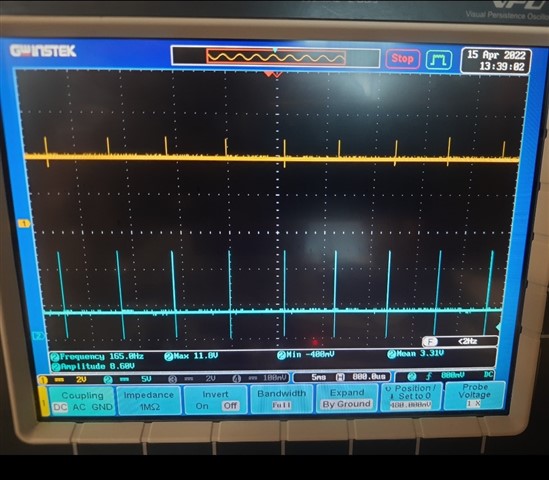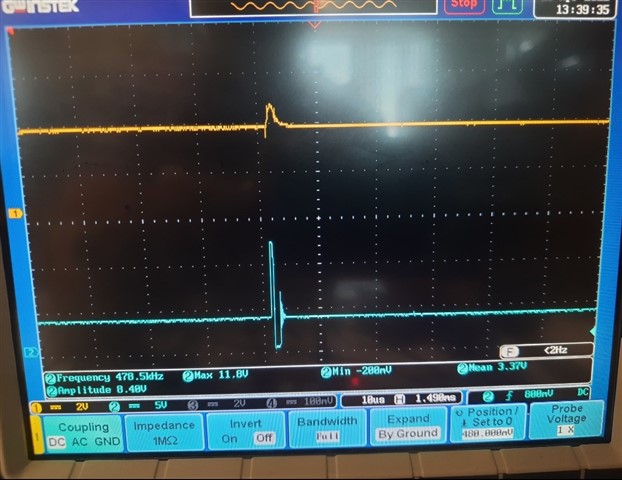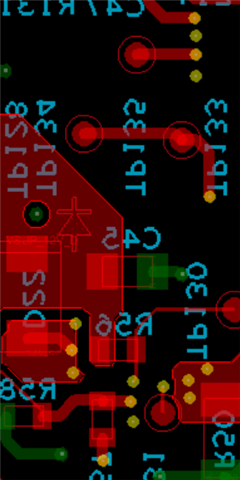Hello,
I have an observation in the behavior of the TPS56339 design. I have an input from an dc-dc 12V and stepping down to 3.3V using TPS56339. This supply is given to an MCU daughter card to power the MCU.
In the absence of MCU card, I see the output voltage is 3.33V. When I connect the MCU daughter card, the voltage increases to 3.421V. Below is the schematic for your reference.

Could you please let me know what could cause the voltage to increase. Thanks in advance,
Regards,
Anand M








